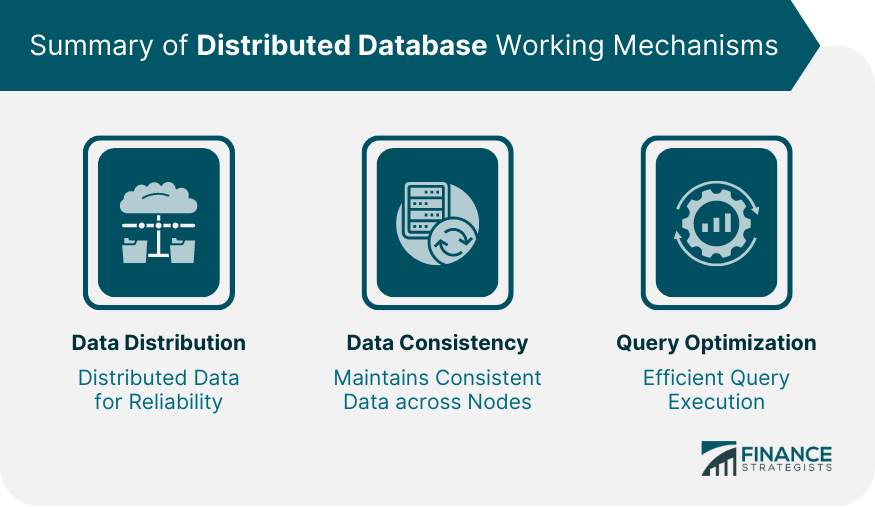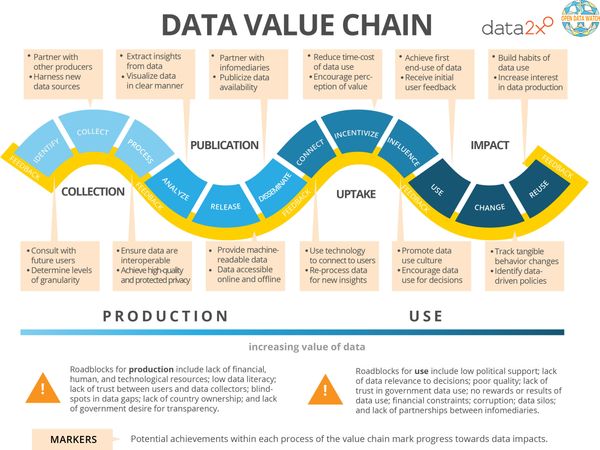Overview
What is database optimization?
Database optimization is the process of improving the performance and efficiency of a database system. It involves identifying and resolving issues that can impact the speed and reliability of data retrieval and storage. By optimizing a database, organizations can enhance the overall performance of their applications and ensure that data is accessed and processed quickly and accurately. Key areas of focus in database optimization include indexing, query optimization, data normalization, and hardware configuration. By implementing best practices and utilizing advanced techniques, such as caching and partitioning, organizations can maximize the performance of their SQL Server databases and improve the user experience.
Importance of database optimization
Database optimization plays a crucial role in improving the overall performance of a SQL Server. By optimizing the database, organizations can achieve better performance insights and enhance the efficiency of their database operations. It allows for faster query execution, reduced response time, and improved data retrieval. With the increasing complexity of data and the growing demand for real-time analytics, database optimization has become more important than ever. By focusing on performance insights, organizations can identify and resolve bottlenecks, optimize resource utilization, and provide a seamless user experience. Implementing effective database optimization strategies can lead to significant improvements in application performance, scalability, and cost-efficiency.
Benefits of optimizing SQL Server databases
Database optimization for SQL Server provides several benefits. Firstly, it improves the overall performance of the database by reducing query execution time and enhancing data retrieval speed. This leads to faster response times and increased productivity. Secondly, it helps in reducing storage space requirements by eliminating redundant and outdated data, thereby optimizing disk space utilization. Additionally, database optimization enhances data integrity and reliability by minimizing the occurrence of errors and ensuring accurate data representation. Lastly, it improves scalability and allows the database to handle larger volumes of data and concurrent user requests efficiently. By optimizing SQL Server databases, organizations can achieve better performance, cost savings, and a more robust and reliable database system.
Understanding SQL Server Performance
Factors affecting SQL Server performance
Factors affecting SQL Server performance include hardware configuration, database design, query optimization, and workload management. One important aspect to consider is the choice of database management system. While SQL Server is a popular option, other systems like Oracle offer their own set of advantages. Oracle database management, for example, provides robust features for scalability and performance tuning. By leveraging the strengths of Oracle, organizations can optimize their database operations and ensure efficient data processing. In addition, Oracle’s advanced query optimization techniques enable faster query execution and improved overall system performance. With the right combination of hardware, database design, and Oracle database management, organizations can achieve optimal performance for their SQL Server environments.
Identifying performance bottlenecks
Identifying performance bottlenecks is a crucial step in optimizing the performance of a SQL Server database. By analyzing the system and identifying the areas that are causing slowdowns, database administrators can take appropriate measures to improve the overall performance. One of the key techniques used in this process is data analysis. By employing various data analysis techniques, administrators can identify patterns, trends, and anomalies in the data that may be contributing to the performance issues. These techniques include query analysis, index analysis, and performance monitoring. By using these techniques, administrators can pinpoint the specific areas that need optimization and make informed decisions to improve the overall performance of the database.
Monitoring SQL Server performance
Monitoring SQL Server performance is crucial for ensuring optimal database performance. By regularly monitoring the performance of your SQL Server, you can identify and address any issues that may be impacting its efficiency and responsiveness. This includes monitoring key performance metrics such as CPU usage, memory usage, disk I/O, and query execution times. Additionally, monitoring can help you identify potential bottlenecks and optimize your database accordingly. By proactively monitoring SQL Server performance, you can ensure that your database operates at peak performance and delivers optimal results for your applications and users.
Indexing Strategies

Introduction to indexing
Database indexing is a crucial aspect of optimizing performance in SQL Server. In this section, we will provide an introduction to indexing and its significance in database optimization. Indexing involves creating data structures that improve the speed and efficiency of data retrieval operations. By organizing and sorting data in a specific order, indexing allows the database management system to quickly locate and retrieve the requested information. This can greatly enhance the overall performance of SQL Server, especially when dealing with large datasets. Understanding the fundamentals of indexing is essential for database administrators and developers to effectively optimize their SQL Server databases.
Types of indexes in SQL Server
In the database landscape, SQL Server provides various types of indexes to optimize query performance. These indexes are crucial for efficient data retrieval and manipulation. Understanding the different types of indexes in SQL Server is essential for database optimization. By choosing the appropriate index type, such as clustered, non-clustered, or filtered indexes, developers can improve query execution time and overall system performance. Additionally, SQL Server also supports unique indexes, which enforce uniqueness on indexed columns. Each index type has its own advantages and considerations, and it is important to evaluate the data characteristics and query patterns to determine the most suitable index type for a given scenario.
Best practices for index creation and maintenance
Data validation in databases is crucial for ensuring the accuracy and integrity of the stored data. It involves verifying that the data entered into the database meets certain predefined rules or constraints. By implementing data validation techniques, such as using check constraints, triggers, and stored procedures, database administrators can prevent the insertion of invalid or inconsistent data. Additionally, data validation helps to maintain data quality and reliability, as it ensures that only valid and reliable data is stored in the database. This is particularly important in scenarios where the database is used for critical operations, such as financial transactions or healthcare records. By following best practices for data validation in databases, organizations can minimize the risk of data corruption, improve data consistency, and enhance overall system performance.
Query Optimization Techniques
Understanding query execution plans
Understanding query execution plans is crucial for optimizing database performance. It allows developers to analyze how SQL Server executes queries and identify areas for improvement. By understanding the underlying execution plan, developers can make informed decisions about database design, indexing strategies, and query optimization techniques. A well-designed database is essential for efficient data storage, retrieval, and manipulation. Therefore, mastering the concept of query execution plans is fundamental for achieving optimal performance in SQL Server.
Query tuning using indexes
Query tuning using indexes is a crucial aspect of database optimization for SQL Server. Indexes play a vital role in improving query performance by allowing the database engine to quickly locate and retrieve the required data. By properly designing and implementing indexes, developers can significantly reduce the time it takes to execute queries, resulting in faster response times and improved overall system performance. When tuning queries using indexes, it is important to consider factors such as the selectivity of the index, the cardinality of the indexed columns, and the distribution of the data. By analyzing query execution plans and monitoring index usage, developers can identify opportunities for index optimization and make informed decisions to enhance the performance of their SQL Server databases.
Optimizing joins and subqueries
When it comes to optimizing joins and subqueries in SQL Server, there are several strategies that can significantly improve performance. One important aspect to consider is optimizing the MSSQL query itself. By carefully analyzing the query execution plan and identifying any potential bottlenecks, developers can make informed decisions to optimize the query and improve overall performance. Additionally, using appropriate indexing techniques and ensuring that statistics are up-to-date can also greatly enhance the performance of joins and subqueries. By implementing these optimization techniques, developers can maximize the efficiency of their SQL Server database and improve the overall user experience.
Data Compression and Partitioning

Benefits of data compression
Data compression is a crucial technique in database optimization for SQL Server. It offers several benefits that can significantly improve the performance and efficiency of the database. By reducing the size of data, data compression allows for faster data retrieval and storage. This leads to reduced disk space usage, which can result in cost savings for businesses. Additionally, data compression can also enhance query performance by reducing the amount of data that needs to be processed. This can lead to faster query execution times and improved overall system performance. Overall, the benefits of data compression make it an essential tool for optimizing SQL Server databases.
Implementing data compression in SQL Server
Implementing data compression in SQL Server is a crucial step in optimizing database performance. By compressing data, SQL Server can reduce the amount of storage space required and improve disk I/O performance. One important aspect of data compression is its impact on execution plans. When data is compressed, the execution plans for queries may change, as the SQL Server query optimizer takes into account the compressed data. This can result in improved query performance and reduced disk I/O. Therefore, understanding the impact of data compression on execution plans is essential for effective database optimization.
Partitioning tables for improved performance
Partitioning tables is a crucial technique for improving the performance of a SQL Server database. By dividing a large table into smaller, more manageable partitions, queries can be executed more efficiently, resulting in faster response times. Microsoft has provided built-in support for table partitioning in SQL Server, making it easier for developers to implement this optimization strategy. Partitioning can be done based on various criteria such as date, range, or key values. This allows for better data distribution and query parallelism, leading to improved query performance. Additionally, partitioning can also enhance data loading and maintenance operations, as only the affected partitions need to be modified. Overall, partitioning tables can significantly boost the performance of a SQL Server database, making it an essential technique for database optimization.
Maintenance and Monitoring

Regular database maintenance tasks
Regular database maintenance tasks are essential for ensuring the optimal performance and efficiency of your SQL Server. By regularly performing these tasks, you can prevent data corruption, optimize query performance, and improve overall system stability. Some of the key database maintenance tasks include regular backups, index maintenance, statistics updates, and database integrity checks. These tasks help identify and resolve any issues with the database, ensuring its smooth operation and minimizing the risk of data loss or performance degradation.
Monitoring and troubleshooting performance issues
Monitoring and troubleshooting performance issues is a crucial aspect of database optimization for SQL Server. It involves identifying and resolving bottlenecks, optimizing queries, and ensuring efficient resource utilization. One important technique in this process is the use of graph databases, which offer a powerful way to model and query complex relationships between data entities. By leveraging the graph database capabilities, developers and administrators can gain insights into the performance of their SQL Server databases, identify performance bottlenecks, and optimize query execution. With its ability to represent interconnected data in a visual and intuitive manner, graph databases provide a valuable tool for monitoring and troubleshooting performance issues in SQL Server.
Automating maintenance tasks
Automating maintenance tasks is a crucial aspect of database optimization for SQL Server. By automating these tasks, database administrators can save time and ensure that routine maintenance activities are performed consistently and efficiently. Some of the key maintenance tasks that can be automated include index rebuilding, statistics updating, and database backups. Automating these tasks not only improves the overall performance of the database but also reduces the risk of human error. With automated maintenance tasks, database administrators can focus on more strategic activities, such as performance tuning and query optimization.
Conclusion

Summary of key points
Database optimization is a crucial aspect of managing SQL Server. It involves various techniques and strategies to improve the performance and efficiency of the database. One of the key points to consider is index creation in SQL Server. Indexes play a vital role in enhancing query performance by providing quick access to the data. By creating appropriate indexes on the relevant columns, the database can retrieve and filter the data more efficiently. Additionally, indexes can also improve the performance of join operations and sorting. Therefore, it is important to carefully analyze the database and identify the columns that require indexing. By implementing effective index creation strategies, SQL Server can deliver faster query execution and improved overall performance.
Importance of ongoing optimization
Database optimization is a crucial aspect of maintaining an efficient and high-performing SQL Server. It goes beyond just initial setup and configuration. The ongoing optimization of a database is of utmost importance to ensure that it continues to meet the evolving needs of an organization. By regularly optimizing the database, organizations can improve query performance, reduce storage requirements, and enhance overall system responsiveness. Ongoing optimization involves various activities such as index maintenance, query tuning, and data archiving. These activities help identify and resolve performance bottlenecks, eliminate redundant or outdated data, and ensure optimal resource utilization. By prioritizing ongoing optimization, organizations can maximize the value and efficiency of their SQL Server database.
Future trends in database optimization
The future of database optimization is constantly evolving, driven by advancements in technology and changing business needs. One of the key trends is the increasing use of machine learning algorithms to automate and optimize database performance. These algorithms can analyze large volumes of data and identify patterns and correlations that human analysts may miss. Another trend is the adoption of cloud-based database platforms, which offer scalability, flexibility, and cost-efficiency. With the growing popularity of big data and the Internet of Things (IoT), database optimization will also need to consider the unique challenges posed by these emerging technologies. Overall, the future of database optimization holds great promise for improving performance, enhancing scalability, and enabling businesses to make data-driven decisions.
In conclusion, OptimizDBA Database Optimization Consulting is the trusted industry leader in remote DBA services. With over 500 clients and more than 20 years of experience, we guarantee a significant increase in performance for your database. Experience transaction speeds that are at least twice as fast as before, with average speeds often 100 times, 1000 times, or even higher! If you’re looking to optimize your database and improve its performance, look no further than OptimizDBA. Visit our website today to learn more about our services and how we can help you achieve optimal database performance.







